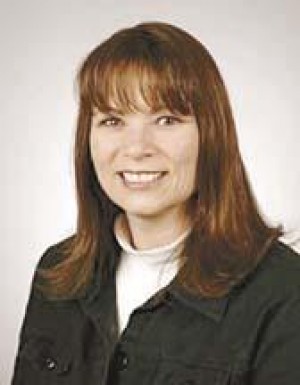Using a soil thermometer that also collects and stores temperatures can help strip-tillers learn invaluable information, says Jodi DeJong-Hughes, University of Minnesota Extension crops adviser.
For the past 4 years, she's used a HOBO temperature-data logger to measure soil temperatures in strip-till and other tillage systems. She places the meters about 2 inches deep in spots where seed will be planted. The meter reads and records the temperature every hour until the battery dies.
|
|
A HOBO meter costs about $42 each, without the software, and the software needed to read and download the data costs $45, she says. The optic base station that connects the meter to the computer costs $115.
"Farmers can plug the meter in to a computer and graph the data to compare temperature readings from different tillage equipment," DeJong-Hughes says.
Monitoring the soil temperatures can provide strip-tillers a detailed picture of what happens during the day throughout the growing season. DeJong-Hughes uses soil thermometers that collect the information and she then downloads it into a computer.
But she notes that others, such as North Dakota State University Extension ag machine systems specialist John Nowatzki, have set up the thermometers to send the temperature data wirelessly to a Web site that tracks time and temperature.
Nowatzki and then-NDSU colleague Laura (Overstreet) Gentry — who is now at the University of Illinois — used the thermometers to compare soil warmup and row orientation. They found that strips in fields with a north-south orientation warmed up faster than strips in an east-west orientation. The north-south strips warmed more quickly because the sun covers the berm more completely throughout the day, DeJong-Hughes notes.
Using the soil thermometers has helped her answer questions about strip-till from farmers who've been concerned that leaving more residue in fields will lead to colder temperatures and, in turn, slower emergence and lower yields than in fields where moldboard plowing or disc-ripping are used.
"Farmers often tell me, 'You've got all that trash in those strip-tilled fields, so it will be too cold for the corn'" DeJong-Hughes says. "The data gathered by the soil thermometers shows farmers the difference in the soil temperatures under the residue between the strip-tilled rows, along with the temperatures taken in the center of the strips and between the center and the edge of the strip.
"We've found that the soil temperature in the strip-tilled berm is as warm as disc-rip and can be as warm as moldboard plowing at the time of planting. This changes due to the specific strip-till equipment used, as well as row spacing and the previous crop."
During the past 4 years, data gathered from the strip-tilled fields shows temperatures in the middle of the strips in a corn-soybean rotation were 5 to 8 degrees F warmer than under the residue, she says. And in continuous corn, the temperature in the middle of the strips was up to 15 degrees F warmer than under the residue.
"The center of the strip — not under the residue — is where you are planting corn, or should be," DeJong-Hughes says. "For strip-tillers using RTK, planting into the center is easy. But for farmers who are eyeballing their planting into strips, being 4 inches off from the middle of the strip can cut corn yields by 5%. That s $60 per acre in 200-bushel-per-acre fields, at $6 corn."
Warmer soil temperatures mean that microbes in the soil are more active, which helps mineralized fertilizer become more available, she adds.
"I especially look at the first 3 to 4 weeks of data to see how soil temperatures differ in strip-till vs. moldboard plowed and disc-ripped fields," she says. "While having warmer temperatures in strip-tilled berms is important, sometimes the temperatures in the soil can be quite hot.
"In fact, we've seen temperatures in moldboard-plowed fields heat up to 95 degrees F. Soil microbes don't like it when they're that hot and they'll shut down."






